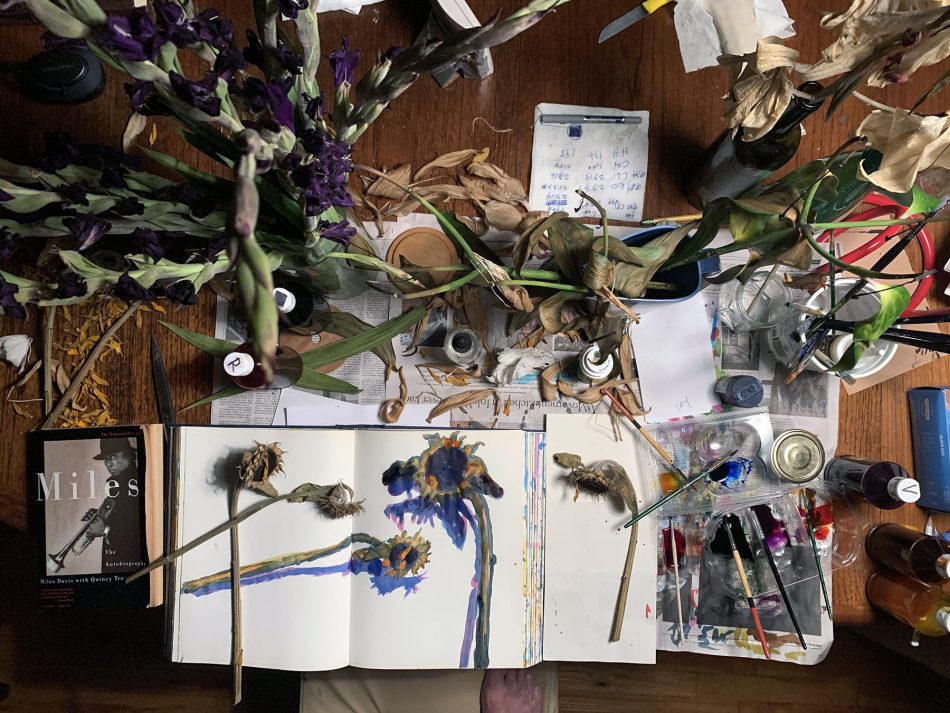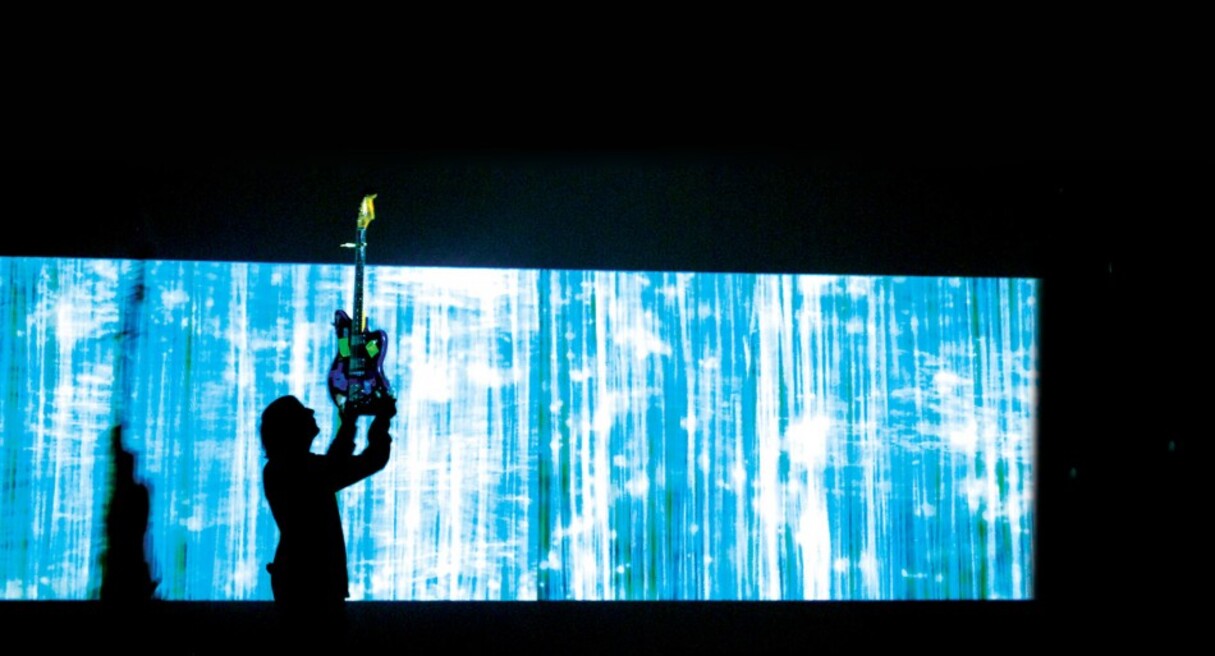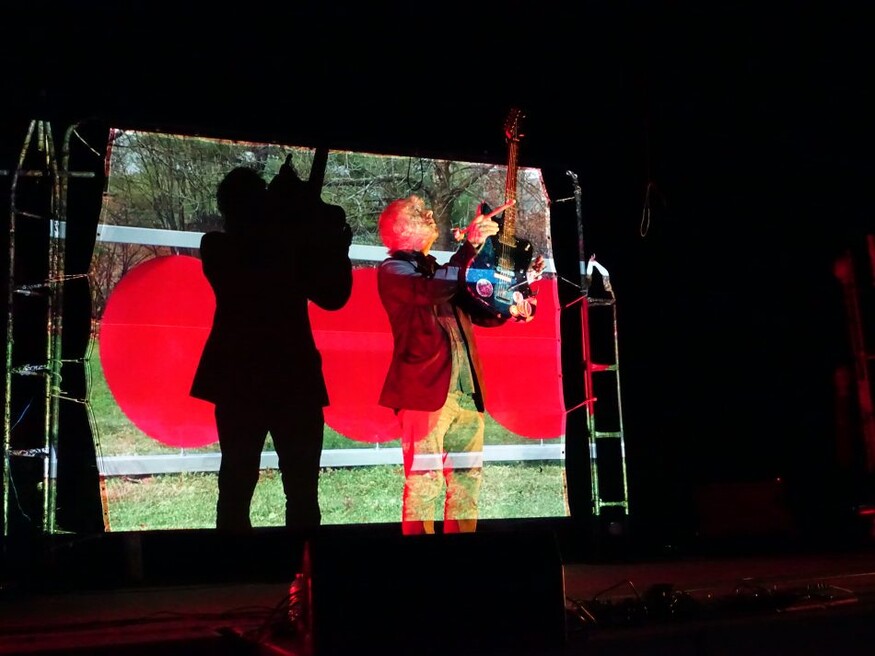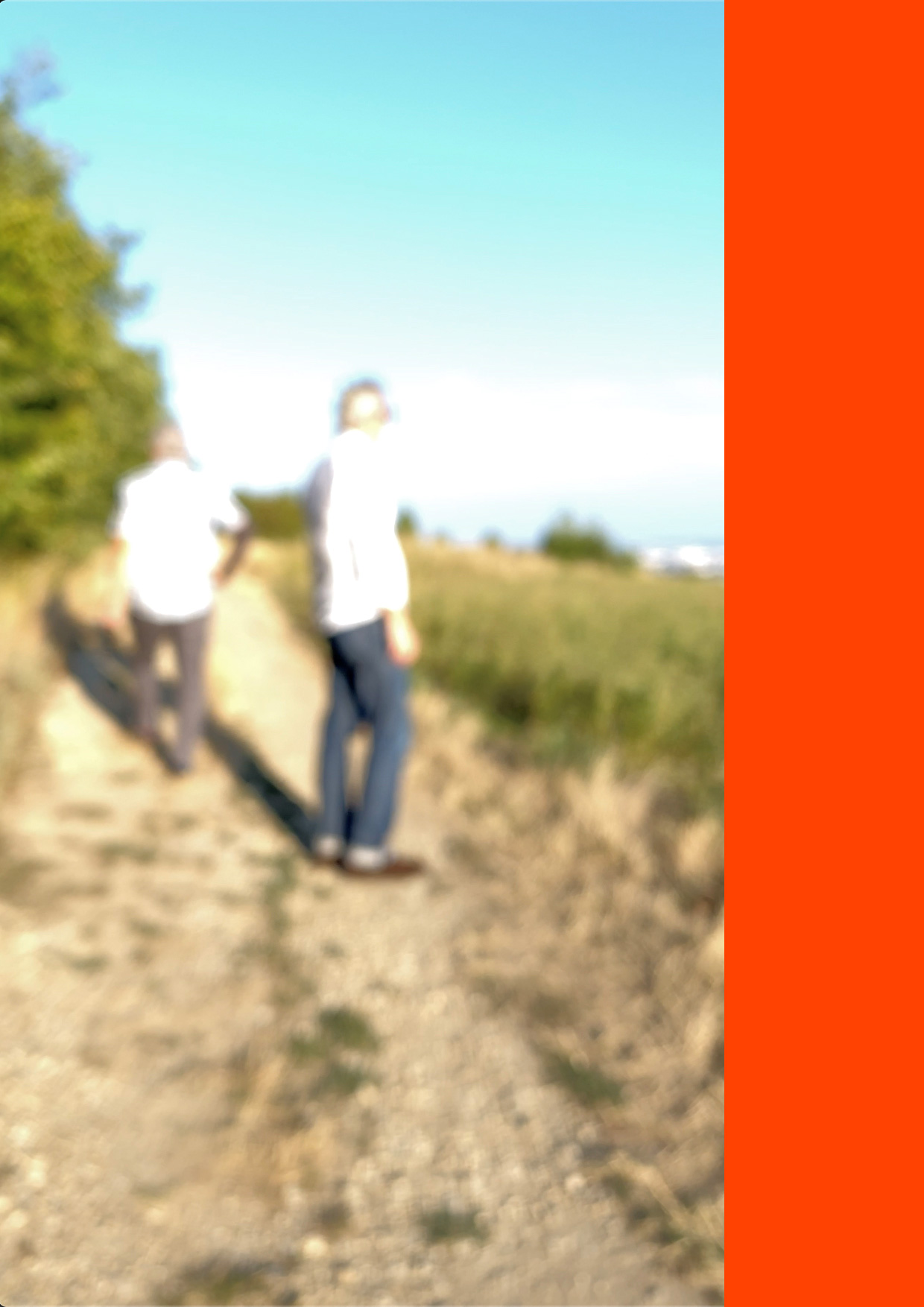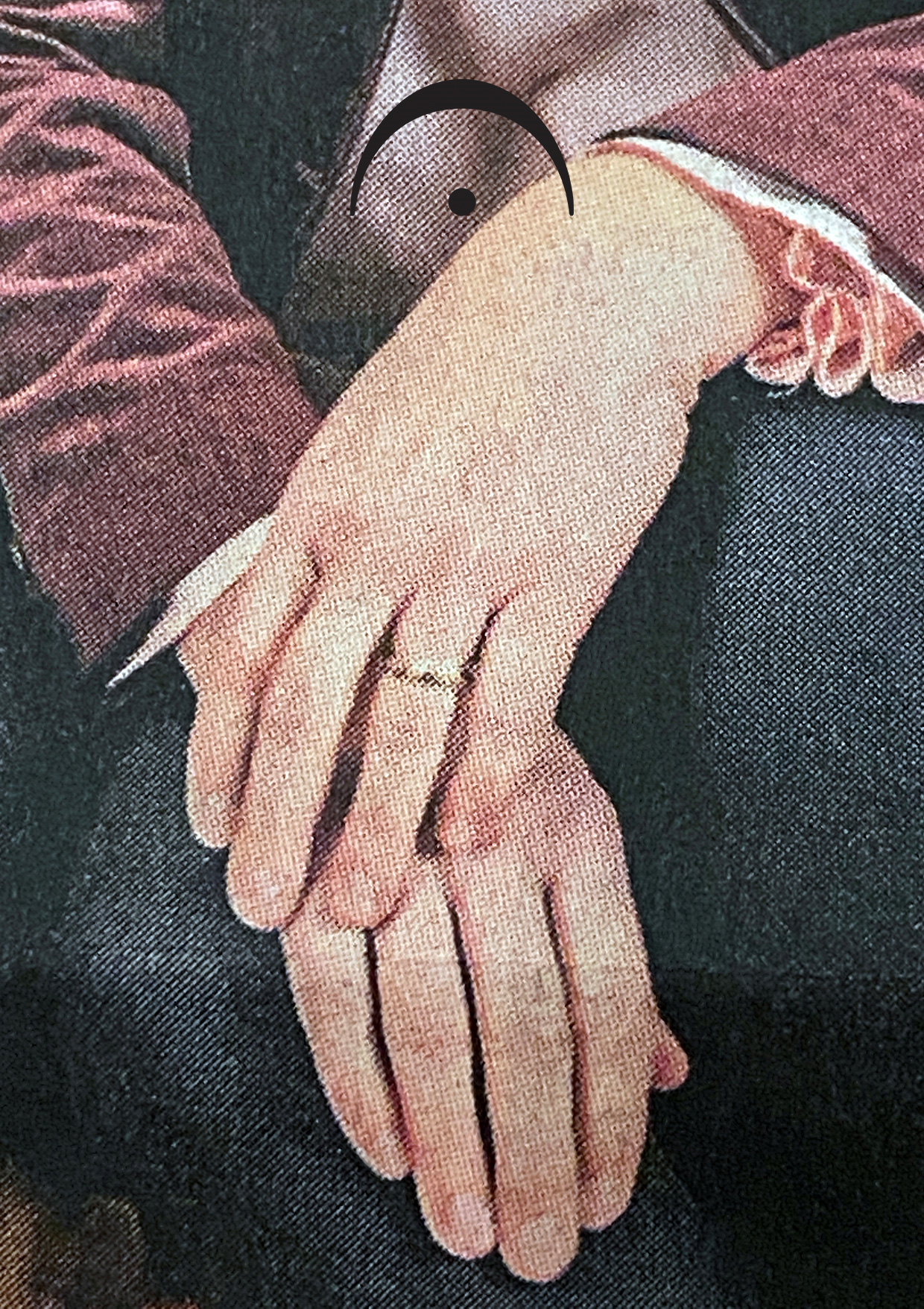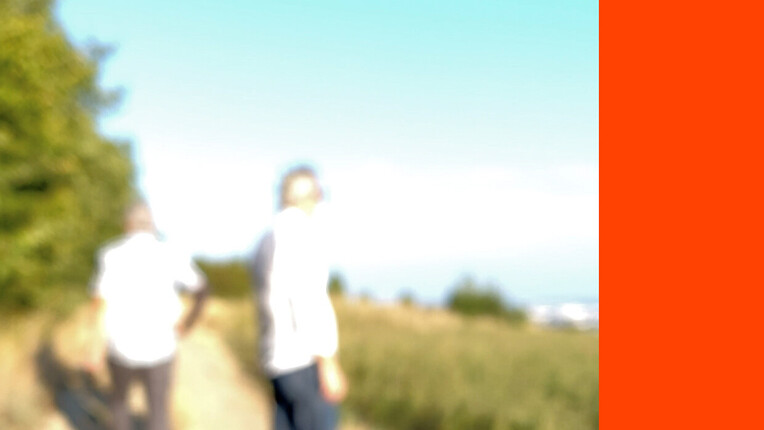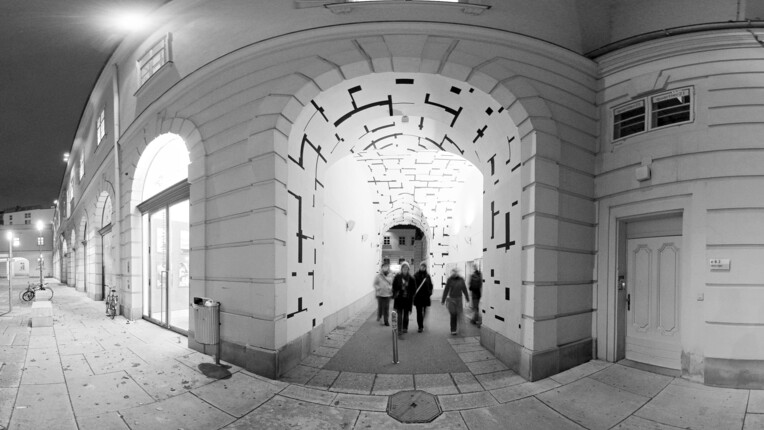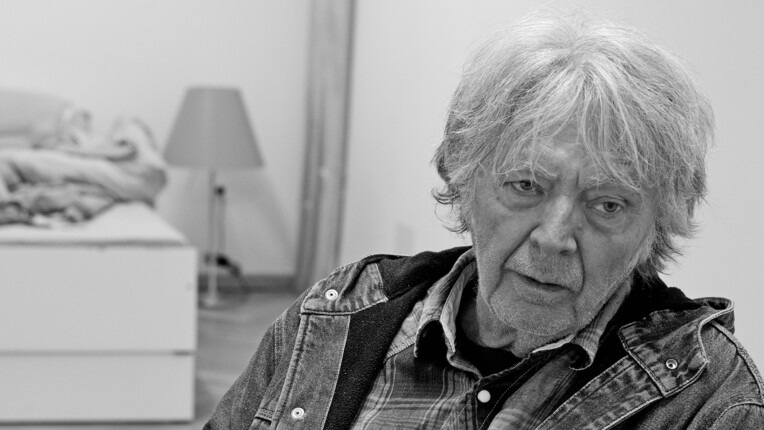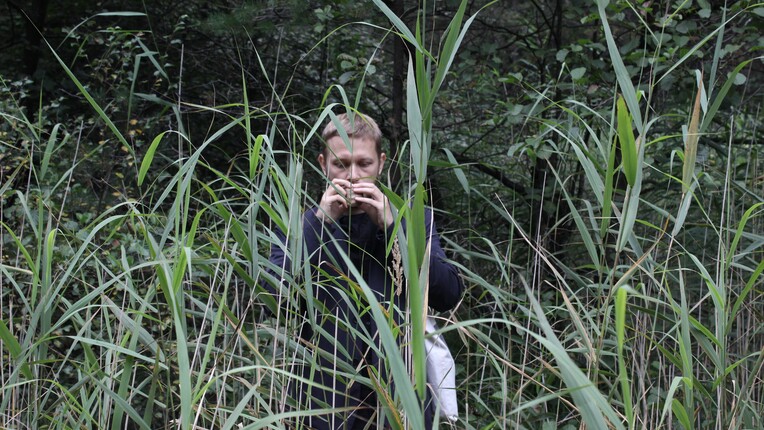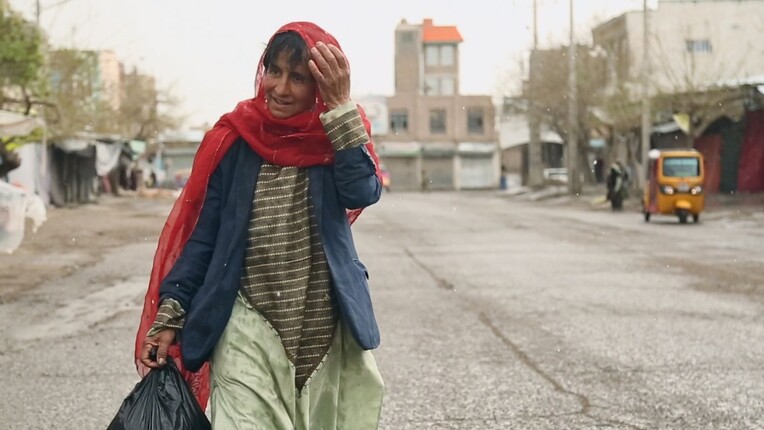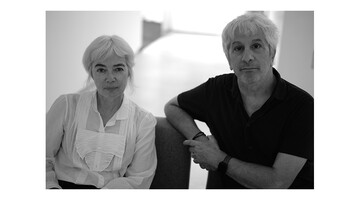
Taking a break with Lee Ranaldo & Leah Singer
Q21 Artists-in-Residence Lee Ranaldo & Leah Singer in conversation about their residency in the MuseumsQuartier Wien.
Leah Singer and Lee Ranaldo are currently Q21 Artists-in-Residence in the MuseumsQuartier in Vienna and were invited in cooperation with TONSPUR Kunstverein Wien. In between visiting the Natural History Museum and doing a sound check, they found time to sit down and talk about their stay in Vienna and their projects for TONSPUR_passage and TONSPUR_display.
Their residency was originally planned for 2020 but had to be postponed due to the pandemic. In August 2022 the couple finally made it to Vienna and seems to enjoy the city at its best, visiting galleries and art spaces, hiking around the vineyards outside of the city, taking bike rides along the Danube and in the city. As Leah Singer puts it, they are “voracious culture freaks and food freaks, flea market freaks and book freaks. And Vienna is a great city for all of that.”
EB: How have you enjoyed Vienna so far?
Leah Singer (LS): What’s interesting to me about Vienna is that it’s so international and has an incredible history and yet it’s small enough that we can walk or bike everywhere, we haven’t been on public transportation yet. Everybody knows everybody, even the physical look of the city is low scale, and friendships seem to have that same scale, everyone knows each other.
Lee Ranaldo (LR): We are seeing a lot of the city and the countryside by bicycle.
EB: Is cycling also part of your practice, to clear your head and focus on things?
LR: To me it is, I try to do it wherever I can.
LS: For me it’s convenience.
LR: I’ve been on some 40/45km rides, that’s my head clearing time and it’s also my exercise time, getting outdoors.
LS: I like being in the Burggarten and in the parks. We love staying in the MQ; we feel like we are staying in this gated arts community and it’s very comforting. Any time I have an extra 40 minutes I’d go to mumok or the Leopold Museum. We did a few off the beaten track things, like seeing the Bosch and the exhibitions at the Akademie.
LR: That was great.
LS: We stumble upon things, but intentionally we went to the Secession because I’d never seen the Klimt Beethoven frieze.
LR: I was so confused, I performed there in 1981 with Glenn Branca, it was maybe the first time I was in Europe and now it looks so different inside. I was searching for this Klimt-designed door handle they used to have, I made rubbings of those back then, and it’s their tote-bag logo but they don’t seem to be in the building anymore.
EB: How did you feel during the pandemic, how have you dealt with it given that you perform before live audiences?
LS: We did a few things during the pandemic, one was a curatorial exhibition in Texas that we completed over zoom, and we also did a live stream performance. We were kept busy, but disappointments were normal.
LR: We stayed at home, I just had a new record released and then everything got canceled so I didn’t do music for a number of months and I was doing watercolor drawings.
LS: We did what everybody else did around the world, even people who don’t do watercolors were making watercolors, and baking bread.
LR: Many people were just waiting for it to end and pick up where they left off in March 2020 and I felt like it was a good moment for a break, to move forward. And indeed, we’ve generated all new works since the pandemic started.
LS: I think a lot of people had a cleansing during the pandemic – whether it was conscious or not.
LR: I released an atypical record during the pandemic, a solo acoustic guitar instrumental and set up a little recording studio at home, with a bit more high fidelity than simply recording stuff on my iPhone. That’s also what I’m doing here, this is really a pandemic recording studio situation for me.
LS: We were sad that the residency was canceled but we are happy to be here now and we love what Georg Weckwerth does in the TONSPUR; he’s had an incredible range of composers and artists. So we are honored to be part of this project.
LR: And this city has deep roots in audio art as well as visual art, there is so much stuff for us to explore. And I’ve been coming here since 81, but Leah has never been here.
EB: Do you think the pandemic changed your perception of time and what’s important in your practice?
LR: I think so, for sure. Something like this is experienced by everyone around the globe. It has the potential to bring humanity together.
LS: The interesting thing is that you experience the same emotions too, so it’s not only that the event is shared globally, unprecedented but the fact that with that comes a shared emotion, this urgency, or desperation, confusion – it didn’t matter where you lived and even what your circumstances were because we were all confronted with the unknown. This urgency and need to create / divert not just as an artist – it made everyone very creative, even people who don’t call themselves creative. I think you have to be creative in your life in order to endure. Creativity crosses over into the banal, the everyday – which is what we are doing. We are looking into newspapers, listening to traffic for inspiration.
LR: I think it made me partly recognize how special it is what we get to do as artists.
LS: The German language has these words that encapsulate the whole universe, such as Gesamtkunstwerk.
Walter Seidl: Would it describe your practice?
LS: Yes. I’m astonished when I go to the Leopold Museum and see the works of the Wiener Werkstätte, and how daily life was infiltrated – everything: wallets, bags, furniture and cars, beautifully designed and esthetically amazing. That concept is progressive because everyone can have that esthetically beautiful thing, you do not have to be wealthy to purchase a beautiful thing and when you are conditioned with looking at beautiful things all the time you gain this level of standardization and appreciation so that you will not commit to something that is not up to your standards. I think that is a great concept, something from this part of the world that we don’t have in the same way in the US. I think you are also not always celebrated if you do too much and this has been chronic for so many artists who do many things.
EB: Do you feel some kind of nostalgia towards the New York of the 1980s?
LS: I don’t like nostalgia.
LR: It changed a lot. New York is all about change and we were able to live through that period so we can revel in it.
LS: A memory is so loaded – who were your friends at the time? Where were you living, was it a shithole or was it a nice apartment?
LR: It’s like were you lucky enough to live there in that period or in Paris in the 1920s or wherever?
LS: But New York is always cool, Paris is always cool, and Vienna is always cool, I’m sure. Every place has its cool moments.
LR: We found a less self-important vibe here, like the KHM rivels the Metropolitan and yet it was so much lower key being inside it, it seemed more focused on the art, couches in every room where you are supposed to sit and look at the art.
LS: Even the Libelle is fantastic, we went up there the other day, it was totally unpretentious, the view was great, and it felt so chill, not uptight. If this was in NY, the drinks would be three times more expensive.
EB: How did the collaboration between you come about, you were first collaborating as Drift and now as Contre Jour.
LR: These days it has a lot to do with me being between the projector beam and the screen, so casting shadows. We’re using this idea of contre jour, things in play with light and blocked by shadow.
LS: We started because I had already been doing a lot of this work in Montréal and New York where visuals were accompanying the sound. Lee was starting to branch out and do solo things outside of Sonic Youth. So we came together that way because I had curated a hand-made instrument festival at the first Knitting Factory and I needed somebody else for my Electronic Night and Michael Dorf who used to run the club suggested Lee because he knew that outside of SY he was doing explorations with a visual element and these hand-made electronic things.
LR: We both have this cinema background, I studied with Ken Jacobs and Leah worked with Jonas Mekas at Anthology Film Archives. Leah was already doing improvisational performances in clubs with musicians when we first met and after that Hand-Made Instrument Festival we were trying to do something together. At that time, she was working with 16mm projectors, and I was doing a lot of spoken word and vocals, and we’ve distilled it over time.
Then we went on to using other people’s words on the soundtrack, we were using words by people that inspired us: for instance Robert Smithson or Brion Gysin.
EB: How is your project for the residency going, what can we expect?
LS: There are two projects, one for the passage and one for the display. Our core concept for both spaces was to get influenced and inspired by being in Vienna. We didn’t come with any materials or preconceived notions and hardly knew the spaces except through photography.
LR: … I’ve been recording in the apartment and around town.
LS: And I’m looking at every available newspaper which is where I’m photographing my theme for the posters, so I’ve learnt about every German, Austrian newspaper. The other residents approach it differently; some artists already came here with a project in progress, and they could finish it here. Others have a carte blanche, like us.
LR: You could say our project is longer term because coming here we’ve been on this path, generating a lot of new things and putting away what we’ve worked with for a long time – images, sounds, and so we came here without premeditation, but it fits in with our greater project.
LS: We have been collaborating since the early 1990s. We know each other so well that we could easily be sitting in another room for a duration of time, working on a collaboration and have no contact and we would come together with our materials, and they would absolutely make sense. That’s the point, we always luckily had an element of that, a symbiotic relation.
LR: We came here with a lot of balls in the air, Leah was intending to interview the artist Marina Faust for apartamento and I have an exhibition opening in Berlin of my drypoint prints. So we are going there next week to install it. Then we’re going to Prague briefly. But we really wanted to get inside the city, we’ve been going to a lot of concerts, we went to Stadtpark to see a performance of the ImPulsTanz festival.
LS: We were offered a month to be here in Vienna and that’s a good length of time for someone who is used to a New York minute.
LR: We keep saying we need two months, we’re not going to get enough done!
LS: In the TONSPUR_display we will present IN CAMERA – in filmic terms it means that you shoot everything inside the camera with no postproduction, in legal terms it means in your chambers or in your room and we like how this also reflected on the display space, the small triangular room...
LR: It also refers to the room in the apartment, where we make this work in a private setting.
LS: I re-discovered this film app on my iPhone during a walk in the wine country outside the city. we will project these videos in that space on the glass. It is this idea of internal, in our room, in our head, in the camera, walking and contemplating.
LR: In the TONSPUR_passage we will present FERMATA. Fermata is a musical term that the composer adds to the score – this half circle with a dot which gives the performer the right to be free, to freely interpret the score at that moment. It’s a permission to experiment in a way. Play it how you feel it rather than how the composer has written it.
LS: The visual component in the TONSPUR_passage is a series of hands sourced and photographed from local newspapers and printed as a series of seven posters. The freeze frame of a hand in motion is the equivalent of a pause or a prolonged note in the music.
LR: The passage is a place to pause, taking the sound environment in.
LS: But we also wanted the freedom to extend to the viewer, to the person walking through the passage. It’s a free space.
LR: The fact that the passage has artwork in the vitrine instead of ads is great; it’s cool that Georg made that evolution to having visual components in the space.
LS: I think the term FERMATA is really an encapsulating way to express our entire project.
LR: It’s a mix of freedom and structure.
The conversation took place on August 18, 2022 at the mumok café.
Interview: Esther Brandl (EB) & Walter Seidl.
Cover photo © Walter Seidl
